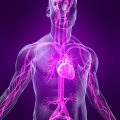Table of Contents
POTS or Postural Orthostatic Tachycardia Syndrome and its symptoms can be caused by many different issues in the body, from abnormalities to underlying medical conditions. Though many medical conditions associated with this syndrome have been identified, while many still remain unknown. This makes it difficult for physicians to distinguish between the causes and effects of POTS, which results to further complication of the problem.
It’s a Syndrome with Lots of Symptoms
POTS by itself is NOT a disease, rather, it’s a syndrome that manifested by multiple symptoms. The symptoms may vary from the underlying conditions, and that condition of course, differ from one person to another. This is why POTS have different causes as well.
There are times where doctors can identify that underlying condition that causes POTS. But there are also cases where the condition can be attributed to many different things. Doctors call it “idiopathic POTS”, which simply means it’s caused by something of unknown origin.
There’s a plethora of disorders that can cause POTS-like symptoms, which is why it is very important to get evaluated by doctors with experience in such area. It is crucial for physicians to find its cause, as many of its underlying medical conditions are curable. Also, depending on the cause, doctors can identify the right treatment strategies, as well as the medications range for the patient. Some of the most common reasons of POTS are:
- Alcohol poisoning
- Amyloidosis
- Anemia and Vitamin D deficiency
- Autoimmune diseases such as lupus, autoimmune autonomic gaglionopathy, Sjogren’s syndrome, etc.
- Chiari malformation
- Deconditioning
- Delta Storage Pool Deficiency
- Diabetes or prediabetes
- Ehlers Danlos Syndrome or joint hypermobility disorder (a disorder of collagen protein which leads to hypermobility of joints and cause veins to become “stretchy)
- Genetic abnormalities or disorder
- Infections such as Lyme disease, Hepatitis C, Epstein Barr virus, Mononucleosis, pneumonia, etc.
- Inherit of abnormal gene
- Mast cell activation disorder
- Mitochondrial disease
- Multiple sclerosis
- Paraneoplastic Syndrome (rare tumor in the breast, lungs, pancreas and ovary that produces antibodies)
- Sarcoidosis
- Surgery, trauma or pregnancy
- Toxicity caused by heavy metal poisoning and chemotherapy
- Trauma
- Vaccination
- Vaccinations
- Vitamin deficiency
POTS Prognosis
POTS may come with relapsing-remitting course, causing symptoms to come and go, and it could be like this for years. In majority of cases (about 80%), patients of this disease can improve physically, and learn to live with their residual symptoms of POTS, and be able to function on a regularly.
Common Tests for POTS
By definition, POTS happen when there’s no drop in blood pressure when in upright position.
To test though, doctors use the ‘Tilt Table Test’. Patient will lie flat on a special bed with a footplate. Some POTS patients will faint a little when set in an upright bed, but of course, they’re in safe hands with the doctor’s supervision. Some doctors also supply medications during the test.
Other common test for POTs includes:
- ECG or electrocardiogram (to check for heart problems)
- Echocardiogram (heart ultrasound to check the structure of the heart)
- Active stand test (lying down and quickly standing for 2 minutes, 5 minutes and 10 minutes
- 24-hour heart rate and blood pressure monitoring
- 24-hour urine collection test
- Blood test






 I love to write medical education books. My books are written for everyone in an easy to read and understandable style.
I love to write medical education books. My books are written for everyone in an easy to read and understandable style.